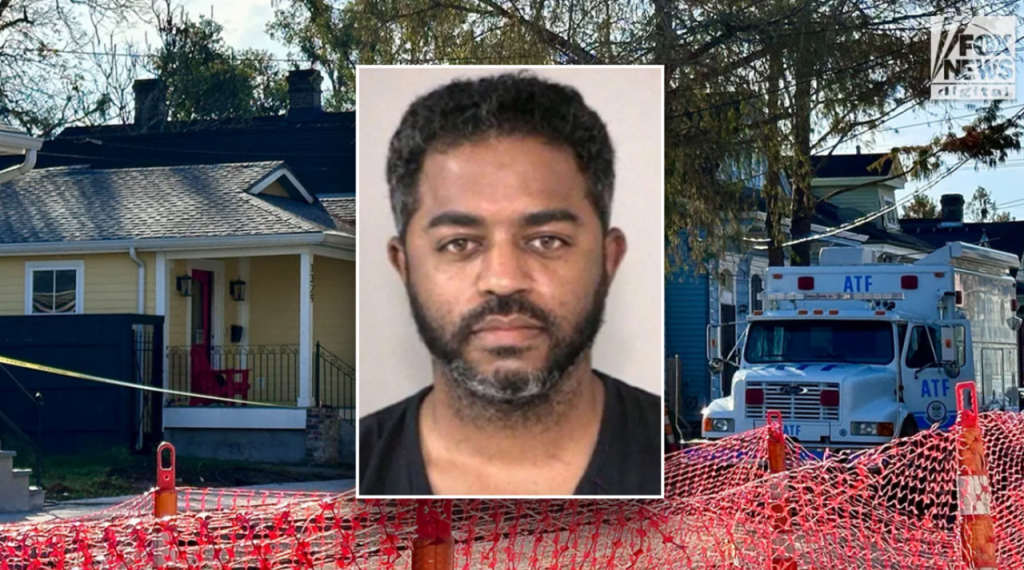The Bureau of Alcohol, Tobacco, Firearms, and Explosives (ATF) has released a comprehensive report detailing their investigation into the fire set by Shamsud-Din Jabbar at his short-term rental property in Mandeville Street, New Orleans, just hours before he perpetrated a deadly attack on New Year’s Day, claiming the lives of 14 people on Bourbon Street. The meticulously conducted investigation pieced together the sequence of events leading up to the tragic incident, shedding light on Jabbar’s preparations and intentions.
The ATF’s National Response Team concluded that Jabbar intentionally ignited the fire at approximately 12:15 a.m., roughly four hours prior to the Bourbon Street attack. He employed a simple open flame, likely matches, to start the fire within the confined space of a linen closet adjacent to the washer and dryer. This location, tucked away in a hallway leading to other rooms, suggests a deliberate attempt to contain the initial blaze. Beyond the linen closet, investigators discovered accelerants strategically placed in other areas of the residence, indicating a calculated plan to destroy evidence related to his impending attack and potentially his overall criminal activities. However, contrary to Jabbar’s intentions, the fire ultimately extinguished itself due to oxygen depletion and the limited fuel source within the enclosed area of the linen closet. Crucially, the fire never spread to the accelerants placed in other rooms, preserving valuable evidence for the subsequent investigation.
The smoldering fire remained undetected until approximately 5:18 a.m., a full hour after the Bourbon Street attack and after Jabbar himself had died. A vigilant neighbor, alerted by the distinct smell of smoke emanating from the residence, promptly contacted emergency services. Responding firefighters extinguished the residual embers and immediately recognized the suspicious nature of the scene, prompting them to alert law enforcement. The ATF and FBI swiftly secured the location, initiating a thorough forensic investigation.
The ATF investigation also uncovered details regarding the firearms used in the Bourbon Street attack. One of the rifles was traced back to a private seller in Texas, from whom Jabbar had made the purchase on November 19th. The seller, who cooperated with authorities, affirmed having no prior acquaintance with Jabbar and being entirely unaware of his radical ideologies. This transaction highlights the potential challenges in monitoring private gun sales and preventing firearms from falling into the wrong hands.
Within the charred remains of the Mandeville Street residence, investigators unearthed critical evidence, including precursors for bomb-making materials and a homemade device suspected to be a silencer for a rifle. The discovery of these items further solidified the notion of Jabbar’s premeditated attack and his intent to inflict maximum casualties. The presence of RDX, a powerful military-grade explosive, underscored the seriousness of the threat posed by Jabbar.
The ATF’s analysis of the explosive materials revealed a critical flaw in Jabbar’s plan. While the RDX he possessed was ideally suited for detonation with a dedicated detonator, Jabbar lacked access to such a device. Instead, he resorted to using an electric match, a significantly less effective method for initiating the explosive. The ATF concluded that this improvisational approach, indicative of inexperience and a crude understanding of explosives, likely prevented a larger and potentially more devastating explosion. This fortunate oversight underscores the importance of restricting access to both explosives and the necessary detonation mechanisms.
In summary, the ATF investigation paints a clear picture of a meticulously planned attack orchestrated by Shamsud-Din Jabbar. His actions, from setting the fire at the Mandeville Street rental property to the acquisition of firearms and explosive materials, demonstrate premeditation and a disturbing intent to cause widespread harm. The fire, initially intended to destroy evidence, ironically preserved crucial clues that allowed investigators to reconstruct the timeline of events and gain insights into Jabbar’s motives and preparations. The investigation also highlighted the critical importance of ongoing efforts to monitor private gun sales and restrict access to dangerous explosives, thereby mitigating the risk of similar tragedies in the future. The detailed findings of the ATF report serve as a stark reminder of the ever-present threat of extremist violence and the need for continued vigilance and proactive measures to protect communities from such threats.

